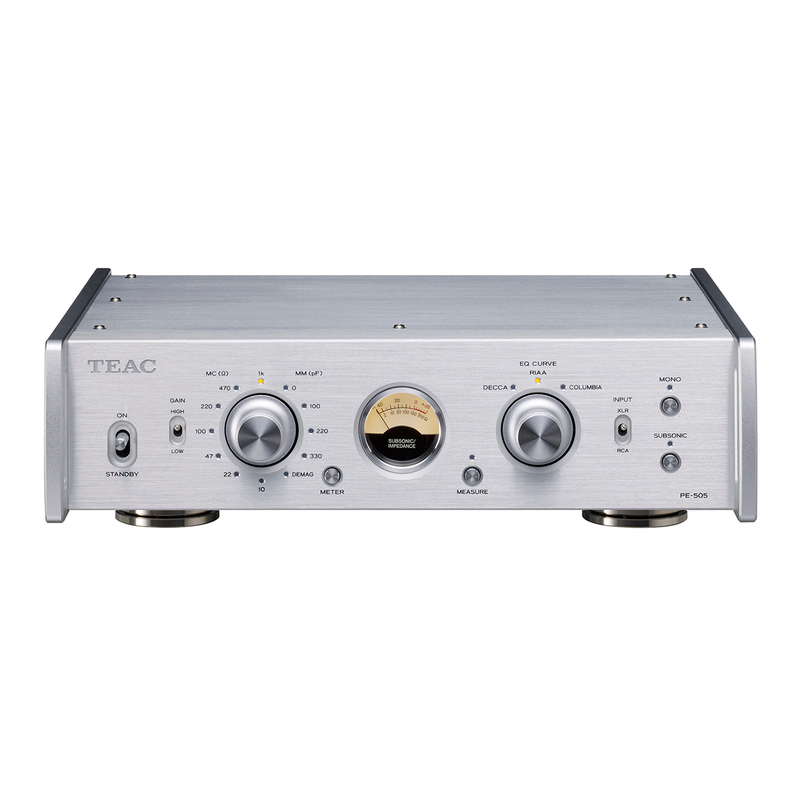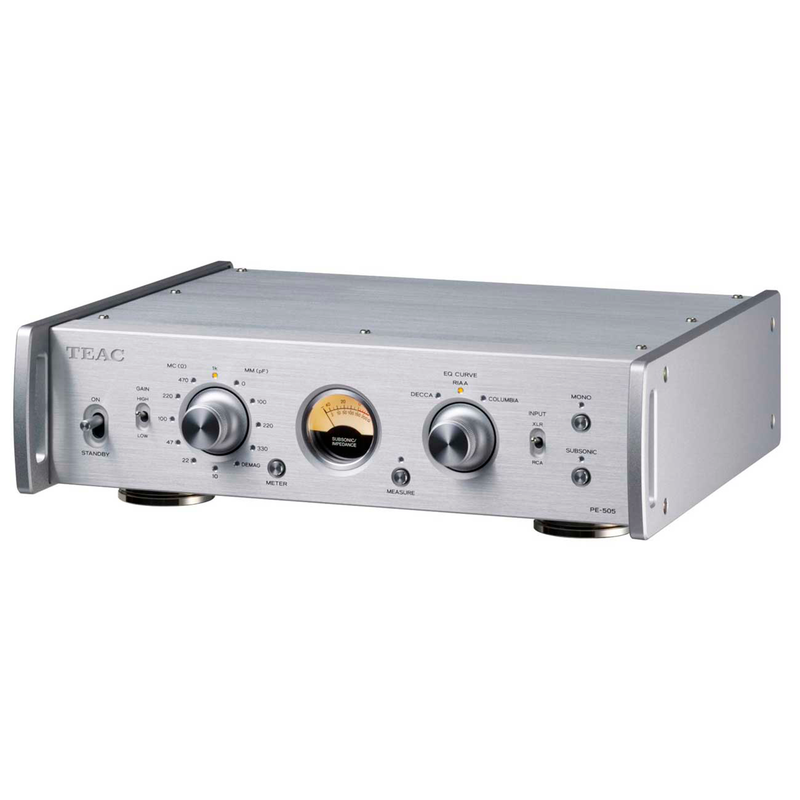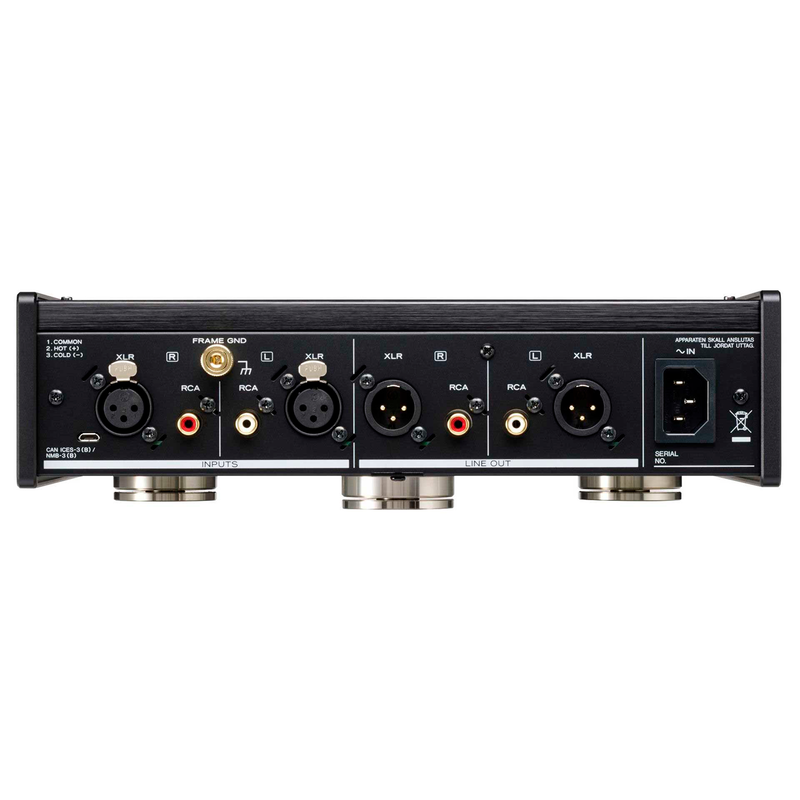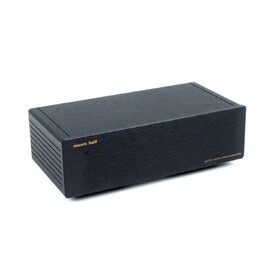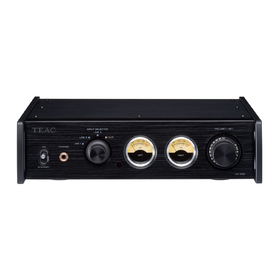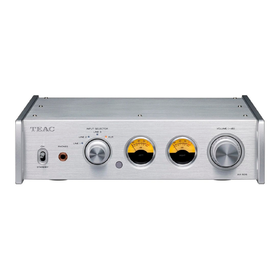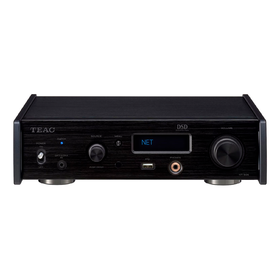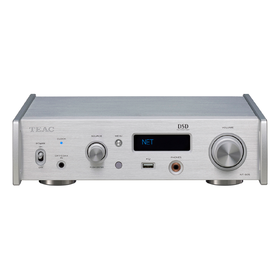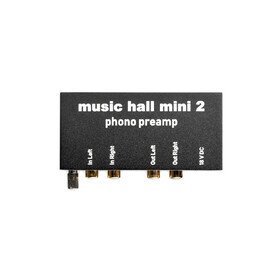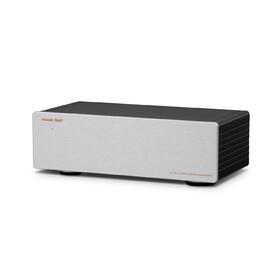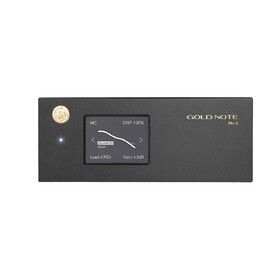PE-505-S
Description
The high-class phono equalizer TEAC PE-505 has very wide functionality despite its relatively small size. The device is made in the classic design of the company's hi-fi components and is characterized by high-quality manufacturing and finishing.
TEAC PE-505 has a very interesting electronic filling. The device is made according to a fully balanced circuit from input to output and has a double mono design. Even unbalanced input signals are converted to balanced ones using a differential circuit, which provides a significant reduction in noise and distortion. The device provides the ability to correct the signal from the pickup in three standards: modern RIAA, as well as Decca and Columbia, which were used earlier - such a function will certainly be appreciated by owners of retro vinyl collections. A separate correction is also provided for monoplates. RIAA correction in TEAC PE-505 is carried out with an accuracy of 0.05 dB, which can be considered an indicator of the reference class.
The arrow indicator on the front panel of the phono stage not only gives it an attractive retro look, but also serves important practical purposes. Depending on the selected measurement mode, it can show the resistance value of the MC-cartridge (together with the connecting cables), or the presence and level of infra-low-frequency interference. This data allows the music lover to properly adjust the parameters of the TEAC PE-505 for the best sound. Also, a very interesting additional function of the phono equalizer is the demagnetization of connected MC-cartridges and matching transformers, which improves their sound quality.
This device can be used together with MM and MC-cartridges of the highest class in the systems of music lovers, the most demanding of sound quality. The TEAC PE-505 is an excellent example of a modern analog device that provides exceptionally high sound quality with the widest functionality.
Features of the TEAC PE-505 phono corrector:
Fully balanced circuit, dual mono;
RIAA, Decca, Columbia switchable correction;
MC-cartridge impedance meter and LF interference level meter;
Demagnetization function of MC-cartridges;
Flexible setting of parameters.
